27 Authentic Cypriot Foods That Bring Mediterranean Flavor
Cyprus boasts a culinary landscape brimming with mouthwatering traditional dishes that reflect its rich cultural heritage.
Mediterranean influences and local ingredients shape the island's distinctive gastronomic identity.
Hearty recipes passed through generations showcase robust flavors and time-honored cooking techniques.
Families take immense pride in preserving authentic culinary traditions that connect them to their roots.
The cuisine tells stories of community, celebration, and deep-rooted agricultural practices.
Seasonal produce and local spices transform simple ingredients into extraordinary meals that tantalize your senses.
Regional variations add depth and complexity to each carefully prepared dish.
You can savor 27 authentic Cypriot foods that promise a delectable journey through the island's culinary treasures:
Cypriot Foods with True Mediterranean Spirit
The sunny island of Cyprus offers flavors shaped by history and geography. Local favorites blend Greek, Turkish, and Middle Eastern influences in every dish.
Kleftiko
Kleftiko emerges as a legendary Greek lamb dish rooted in revolutionary mountain rebels' cunning cooking techniques, where meat transforms into tender, mouthwatering perfection through slow baking in sealed foil packages.
Mountain fighters during the Greek Revolution pioneered this cooking method to conceal their locations by preventing telltale cooking aromas from escaping their hidden camps.
Rebels strategically wrapped meat and sealed it underground, ensuring complete discretion while preparing nourishing meals.
Mediterranean seasonings like oregano, garlic, and lemon infuse deep, rich flavors into the meat during slow cooking.
Modern ovens replace underground cooking, but the essence of stealth and flavor remains unchanged.
Souvla
Souvla represents Cyprus's most celebrated barbecue tradition where succulent meat - typically lamb, pork, or chicken - transforms into a mouthwatering delicacy through slow-roasting on long skewers over open flames.
Marinated carefully to enhance tenderness, the meat receives constant basting that intensifies its rich flavor profile during cooking.
Lysiotiki souvla, named after the village of Lysi, stands as the most renowned regional variation of this beloved dish.
Cypriots traditionally prepare souvla during significant celebrations like Christmas and Easter, making it a centerpiece of festive gatherings.
Salt, pepper, and olive oil form the classic seasoning blend that elevates the meat's natural qualities.
Mediterranean grilling techniques ensure each piece develops a perfectly crisp exterior while maintaining juicy interior texture.
Skilled grill masters carefully rotate the skewers to guarantee even cooking and maximum flavor absorption.
Kefalotyri
Kefalotyri rocks as a powerhouse Greek-Cypriot cheese with roots tracing back to the Byzantine era, boasting a legendary status among hard cheese varieties.
Crafted from goat or sheep milk, this cheese delivers an intense flavor profile that dances between salty, sharp, and spicy notes.
Distinctive irregular eyes and a firm, flaky texture make it stand out in the cheese world.
Aged varieties intensify its robust character, developing deeper complexity after maturing for one year or more.
Younger versions, aged just 2-3 months, offer a milder yet still pronounced taste experience.
Macedonian and Thessalian regions pride themselves on producing exceptional versions of this traditional cheese.
Greek cuisine frequently features kefalotyri in grilling, grating, and baking applications.
Specialty markets and cheese enthusiasts seek out this remarkable dairy treasure for its uncompromising flavor and cultural significance.
Sheftalia
Sheftalia sizzles as a mouthwatering Cypriot sausage crafted from ground pork and lamb, blended with red onion and parsley, then wrapped in delicate caul fat for an irresistible grilling experience.
Cyprus claims this street food gem originated from a mysterious vendor or derives its name from the Turkish word meaning "peach" due to its unique texture.
Skilled cooks season the meat mixture with salt, pepper, and a hint of cinnamon before carefully skewering and grilling.
Caul fat melts during cooking, creating a crispy, caramelized exterior that locks in succulent juices.
Grilling transforms the sausage into a golden-brown delicacy with tender, flavorful meat inside.
Restaurants and street vendors across Cyprus proudly serve this traditional dish.
Mediterranean barbecue enthusiasts consider sheftalia a must-try specialty.
Halloumi
Halloumi cheese emerges as Cyprus's culinary treasure, crafted with centuries-old techniques in iconic regions like Nicosia and Limassol.
Shepherds traditionally blend fresh sheep and goat milk, sometimes adding cow's milk, to create this unique Mediterranean delicacy.
Mint leaves nestled between cheese curds impart a distinctive aromatic signature during the careful folding process.
Skilled artisans carefully press the cheese, developing its signature firm texture and high melting point.
Cypriots have preserved this ancient cheesemaking method through generations, transforming simple ingredients into a beloved national staple.
Mediterranean cuisine celebrates halloumi's versatility, grilling it to golden perfection or serving it fresh in salads and pastries.
Goat and sheep breeds native to Cyprus contribute to the cheese's rich, tangy flavor profile.
Small-batch production in traditional villages ensures each wheel maintains its authentic character and time-honored craftsmanship.
Stifado
Stifado emerges as a soul-warming Greek stew packed with complex flavors and rich culinary heritage, showcasing an irresistible blend of onions, tomatoes, and robust meats like beef, goat, or rabbit.
Warming spices such as cinnamon, cloves, and allspice infuse the dish with deep, aromatic notes suggesting Levantine influences.
Wine or vinegar provides a tangy backbone to the slow-cooked meal, ensuring tender meat and intense flavor development.
Mediterranean ingredients merge seamlessly, creating a deeply satisfying one-pot wonder.
Italian linguistic roots shine through its name, derived from "stufato," meaning stewed.
Generations have treasured this winter comfort food, passing recipes through family traditions.
Humble yet sophisticated, stifado represents Greece's ability to transform simple ingredients into extraordinary cuisine.
Loukoumades
Lokma fritters burst with sweet indulgence, tracing their roots through ancient Mediterranean culinary traditions.
Greek Olympians once celebrated victory by savoring these golden-brown treats drenched in honey.
Turkish and Greek cultures claim ownership of these deep-fried pastries made from simple flour, sugar, yeast, and salt.
Syrup-soaked and crispy, lokma emerge from hot oil as irresistible bite-sized delights.
Street vendors across Greece and Turkey specialize in crafting these sugary morsels.
Historical records suggest these fritters date back thousands of years, potentially originating in multiple Mediterranean regions.
Variations include different syrup styles and occasional toppings like cinnamon or crushed nuts.
You can find these addictive pastries in bakeries, street stalls, and traditional restaurants throughout the Mediterranean.
Labneh
Labneh emerges as a creamy Middle Eastern yogurt cheese with a uniquely tangy and mild flavor profile that transforms simple ingredients into a luxurious spread.
Straining plain full-fat yogurt with salt creates this versatile delicacy over twelve to twenty-four hours, allowing whey to separate and produce a thick, firm consistency.
Cultures across Greece, Turkey, Cyprus, Central Asia, the United States, Mexico, and the United Kingdom embrace similar strained yogurt techniques.
Texture ranges from smooth and spreadable to dense and compact, depending on straining duration.
Salt adds a subtle savory dimension to its nuanced taste.
Middle Eastern cuisine celebrates labneh as a staple condiment and versatile ingredient.
Drizzling olive oil or sprinkling za'atar can enhance its natural richness.
Serving labneh alongside flatbread or as a dip makes it a crowd-pleasing Mediterranean treat.
Loukaniko
Loukaniko captivates Mediterranean palates with its unique blend of meat and citrusy spices, transforming traditional sausage into a sensory experience.
Greek and Cypriot kitchens craft this specialty using pork or lamb infused with distinctive ingredients like orange zest, fennel, leeks, red wine, and coriander.
Craftsmen carefully balance flavors, creating sausages that range from fresh to smoked or cured.
Grilling brings out the intense aromatics, caramelizing the exterior while maintaining a juicy interior.
Restaurants and home cooks serve loukaniko as a classic appetizer or meze dish.
Mediterranean restaurants often feature this sausage as a signature starter.
Diners savor each bite, experiencing a slice of Greek gastronomic heritage.
Afelia
Afelia emerges as a mouthwatering Cypriot specialty featuring pork slowly braised in red wine and coriander seeds, transforming simple ingredients into a rich culinary masterpiece.
Ancient Greek roots trace the dish's name to ovelia, meaning cooked meat, which signals its traditional significance.
Cypriot kitchens typically prepare this dish in clay tava vessels, ensuring slow and even cooking that tenderizes meat to perfection.
Shoulder or short rib cuts of pork serve as the primary protein, absorbing the deep flavors of dry red wine and crushed coriander seeds.
Coriander plays a crucial role in Cyprus, appearing as an essential spice in most traditional recipes.
Generations have passed down this method of preparing meat, creating a connection to cultural heritage.
Mediterranean cooking techniques shine through in this rustic, flavorful preparation.
Regional wine and spice selections contribute to the dish's distinctive taste profile.
Hellimli
Hellimli stands out as a mouthwatering Cypriot bread bursting with Mediterranean flavors and rustic charm.
Crusty golden exteriors hint at the soft, savory interior filled with diced halloumi cheese, chopped onions, and fragrant mint.
Bakers carefully knead flour, water, milk, salt, butter, and olive oil into a rich dough that transforms into a sensational treat.
Traditional clay ovens help create its signature crisp texture and deep golden color.
Cypriot kitchens have perfected this bread over generations, making it a beloved staple of island cuisine.
Halloumi cheese adds a salty, tangy dimension that elevates the bread's overall taste profile.
Salt and mint contribute complementary flavor notes that dance across your palate.
Each slice promises a delicious journey through Cyprus's culinary heritage.
Potatoes And Eggs (Patates Me Avga)
Patates me avga bursts with rustic Cypriot-Greek comfort, transforming humble potatoes and eggs into a satisfying skillet meal that speaks directly to Mediterranean home cooking.
Crispy cubed potatoes sizzle golden in olive oil until perfectly caramelized and tender throughout their edges.
Whisked eggs cascade over the hot potatoes, quickly setting into soft, creamy curds that embrace each potato chunk.
Olive oil infuses rich flavor while creating a glistening coating across the entire dish.
Salt and pepper provide classic seasoning that enhances the natural ingredients' taste.
Greeks typically prepare this quick breakfast or light lunch in a single pan, making cleanup simple.
Family members often gather around the table to share this warm, unpretentious meal straight from the skillet.
Generations have passed down this straightforward recipe, celebrating its simplicity and soul-warming qualities.
Lountza
Lountza electrifies Cypriot cuisine with its bold wine-marinated and smoked pork tenderloin, drawing roots from Genoese merchant influences during the 14th century.
Pitsilia region claims this delicacy as a culinary gem, showcasing traditional preservation techniques passed through generations.
Craftsmen carefully select premium pork tenderloin and immerse it in robust local red wine for deep flavor infusion.
Meticulous smoking transforms the meat into a succulent delicacy with rich, complex taste profiles.
Cypriots cherish this specialty as a testament to their gastronomic heritage and cultural resilience.
Mediterranean ingredients and time-honored methods contribute to its distinctive character.
Wine marinade tenderizes the meat while imparting subtle aromatic notes.
Fasolada
Fasolada emerges as Greece's national comfort soup, tracing back to Alexander the Great's military diet of barley, olives, and beans.
Ancient warriors sustained themselves with this hearty bean-based dish packed with nutritional goodness.
Mediterranean flavors dance through the soup's rich broth, featuring white beans swimming alongside chopped onions, celery, and ripe tomatoes.
Greek Orthodox Christians traditionally enjoy fasolada during Lent as a meatless meal celebrating religious traditions.
Mythological roots connect the soup to Theseus, who promised Apollo olive branches before battling the Minotaur.
Olive oil drizzled generously adds depth and authentic Greek character to this timeless recipe.
Mediterranean kitchens have cherished fasolada for generations, transforming simple ingredients into a soul-warming experience.
Historical significance blends perfectly with incredible taste, making fasolada more than just a meal - it's a cultural emblem.
Bourekia
Bourekia delights Mediterranean palates with crispy phyllo pockets bursting with flavorful fillings that transform simple ingredients into culinary magic.
Cyprus claims these golden-brown pastries as a signature treat loved across Greek and Middle Eastern regions.
Sweet versions enchant taste buds with creamy anarich cheese, cinnamon, and sugar nestled inside delicate dough.
Rosewater or citrus blossom water often elevates the filling's aromatic profile.
Deep-frying creates a perfectly crisp exterior that crackles with each bite.
Savory variations might incorporate ground meat, halloumi, graviera, feta, spinach, or mushrooms.
Honey or cinnamon sugar typically provides a final touch of irresistible sweetness.
Anari
Cypriot anari cheese stands out as a versatile dairy delicacy crafted from goat or sheep milk with unique textural qualities.
Cheesemakers transform this white cheese into two distinct styles: fresh and dry varieties that showcase different culinary potentials.
Fresh anari boasts a creamy, soft consistency and mild salty-sweet profile, making it a perfect breakfast companion when drizzled with honey or fruit preserves.
Dry anari undergoes a salting and sun-drying process, resulting in a harder texture ideal for grating over pasta dishes.
Mediterranean cuisine embraces this cheese for its adaptable nature and subtle flavor nuances.
Goat and sheep milk contribute to its distinctive taste and nutritional richness.
Traditional Cypriot kitchens celebrate anari as a staple ingredient in numerous regional recipes.
Cyprus proudly considers this cheese an essential part of its gastronomic heritage.
Flaouna
Flaouna stands out as a mouthwatering Cypriot Easter pastry bursting with rich cheese and aromatic herbs wrapped in a golden-crusted dough.
Bakers carefully craft this traditional treat using a blend of flour, eggs, sugar, butter, and yeast mixed with tangy cheese and fragrant mint.
Sesame seeds generously coat the surface, adding a delightful crunch to the soft interior.
Cypriots celebrate springtime by preparing these savory-sweet pastries during Easter festivities.
Families gather to knead the dough and share stories while creating this beloved holiday specialty.
Generations have passed down the recipe, preserving a cherished culinary tradition.
Each bite connects you to Cyprus's cultural heritage and warm community spirit.
Shoushoukos
Churchkhela, Georgia's beloved national candy, dangles like a waxy candle packed with nutty goodness and sweet grape essence.
Georgian mountain villagers traditionally string walnut halves and carefully dip them into thickened grape juice called pelamushi.
Concentrated grape juice coats each walnut strand, creating a unique texture that's simultaneously chewy and crunchy.
Artisan makers meticulously suspend the nut-filled strings to dry naturally in sunlight, allowing the mixture to harden into a distinctive sausage-like shape.
Mountainous regions of Georgia have perfected this centuries-old technique, transforming simple ingredients into a nutrient-dense snack.
Winter travelers and local families prize churchkhela as an energy-rich treat that withstands harsh conditions.
Walnut varieties like English and local Georgian nuts determine the candy's final flavor profile.
Loukoumi Geroskipou
Loukoumi Geroskipou stands out as a unique Cypriot sweet treat crafted with meticulous care in Geroskipou municipality since 1895.
Sophocles Athanasiou pioneered this sugary delicacy using a closely guarded traditional recipe.
Powdered sugar or shredded coconut elegantly coats each soft square, creating a visually appealing confection.
Signature flavors range from classic rose and strawberry to exotic mandarin and bergamot.
Nuts, honey, and bitter chocolate often enhance its complex taste profile.
Careful preparation demands significant time and patience, making authentic reproduction challenging.
Cyprus proudly protects this sweet heritage through careful preservation of its original techniques.
Generations have savored this melt-in-your-mouth treat, celebrating its rich cultural significance.
Spoon Sweets (Glyko Tou Koutaliou)
Spoon sweets emerge as a cherished Greek hospitality ritual, transforming fruits, nuts, and vegetables into glossy, preserved delicacies suspended in glistening sugar syrup.
Ancient Greeks initially used these treats as a clever poison detection method, sharing from a communal bowl to ensure safety.
Regions across Greece boast unique specialties, with Chios featuring grapes and figs, Santorini showcasing cinnamon-spiced tomatoes, and Crete highlighting grape and raisin variations.
Traditionally served on a well-filled teaspoon, these sweets welcome guests with a burst of concentrated flavor and cultural significance.
Each carefully prepared sweet maintains its original color, texture, and aroma during the preservation process.
Andros contributes fragrant citrus blossoms, while Peloponnese celebrates every imaginable citrus variety.
Generations have maintained this sweet tradition, passing down recipes that reflect Greece's rich culinary heritage.
Tsamarella
Tsamarella stands as Cyprus's legendary sun-dried goat meat delicacy, crafted from premium goat thighs using ancient preservation techniques perfected in mountainous regions like Marathasa Valley and Paphos.
Mountain shepherds meticulously salt and dry the meat under intense Mediterranean sunlight, creating a robust protein with concentrated flavor and exceptional texture.
Skilled artisans carefully slice the goat meat into thin strips before generously coating them with sea salt.
Preservation methods involve hanging meat strips in well-ventilated areas to dry naturally for several weeks.
Minimal processing ensures the meat retains its rich, intense taste and nutritional value.
Generations of Cypriot families have cherished this traditional protein as a protein-packed snack and protein source.
Tsamarella serves as a testament to Cyprus's resourceful culinary heritage and sustainable meat preservation practices.
Resi
Resi emerges as a celebratory Cypriot wheat and lamb stew deeply rooted in wedding traditions of Paphos, where community members collaborate to prepare this hearty meal.
Generations gather to meticulously wash and grind wheat by hand, creating a ritual that transforms simple ingredients into a meaningful cultural experience.
Slow-cooked lamb simmers gently with wheat, developing rich layers of flavor through hours of patient preparation.
Communal cooking represents more than just meal preparation - it symbolizes unity and shared celebration.
Wedding guests participate in grinding wheat, creating a festive atmosphere around the cooking process.
Wheat provides substantial texture and heartiness to the tender lamb meat.
Each step involves careful technique passed down through family generations.
Paphos region takes special pride in maintaining this traditional culinary practice that connects people through food and shared experience.
Magarna Bulli
Magarna bulli electrifies Northern Cypriot cuisine with its bold Mediterranean flavors and hearty chicken-pasta fusion.
Succulent chicken pieces interplay with penne or macaroni in a rich stock seasoned with zesty lemon juice and aromatic herbs.
Salt, pepper, and garlic boost the dish's intense profile while halloumi cheese adds creamy texture and depth.
Chopped parsley and fresh mint provide sharp green notes that complement the protein's robust character.
Olive oil binds ingredients, creating a silky sauce that coats each pasta piece perfectly.
Cypriots traditionally prepare this comfort meal during family gatherings and special occasions.
Regional cooking techniques ensure each ingredient maintains its distinctive taste and integrity.
Balanced spices and fresh components make magarna bulli a quintessential Northern Cypriot culinary experience.
Patates Antinaxtes
Antinaxtes bursts with Cypriot culinary heritage, transforming humble potatoes into a rich, aromatic delicacy through a simple yet ingenious cooking method.
Chefs carefully wash and slightly crush potatoes before frying them in olive oil until golden and crispy.
Mediterranean flavors intensify as dry red wine splashes into the sizzling pan, creating a complex flavor profile.
Crushed coriander seeds add earthy depth and subtle complexity to the dish.
Salt and pepper blend seamlessly with the wine's acidity, enhancing the potatoes' natural sweetness.
Generations have enjoyed this comforting side dish at family gatherings.
Wine-infused potatoes emerge as a testament to the island's resourceful and flavorful cuisine.
Pafitiko Loukaniko
Pafitiko loukaniko bursts with Cypriot culinary heritage, featuring fresh minced pork sausage uniquely aged in local Mavro wine.
Generations of Paphos District producers have carefully preserved this century-old recipe through traditional techniques.
Mavro wine's red and white blend creates the sausage's distinctive color and rich flavor profile.
Artisan producers often enhance the meat with aromatic spices like ground cinnamon, cloves, and fragrant mastic berries.
Wine-marinated pork gives the sausage its signature taste and tender texture.
Versatile by nature, Pafitiko loukaniko can be enjoyed raw, grilled, or fried.
Locals typically serve this specialty alongside creamy halloumi cheese and crisp fresh vegetables.
Regional pride shines through every savory bite of this authentic Cypriot delicacy.
Shamishi
Shamishi tempts Cypriot dessert lovers with its golden-brown fried pastry shell encasing a luscious semolina filling that melts in your mouth.
Crispy exterior gives way to smooth, sweet semolina paste infused with aromatic cinnamon and delicate orange blossom water.
Skilled bakers carefully craft each pastry by hand, folding thin dough into perfect crescents before deep-frying to a rich golden color.
Powdered sugar dusts the surface, adding a final layer of sweetness to this traditional Mediterranean treat.
Cyprus kitchens have perfected this recipe over generations, transforming simple ingredients into an irresistible dessert.
Street vendors and family bakeries share this beloved snack during celebrations and everyday moments.
Small bakeries across the island continue the time-honored tradition of making shamishi.
Each bite connects you to Cyprus's rich culinary heritage and warm hospitality.
Apohtin
Cyprus boasts an extraordinary meze delicacy of salted goat meat rooted in Byzantine traditions, transforming elderly goats into a succulent culinary treasure.
Skilled artisans carefully preserve meat from aging animals through ancient salt-curing techniques passed down through generations.
Meat selections typically involve mature goats nearing the end of their productive lives, ensuring maximum flavor concentration.
Cypriot families prepare this dish with meticulous attention, allowing salt to deeply penetrate and tenderize tough muscle fibers.
Wine and zivania, a potent local grape spirit, traditionally accompany this savory protein.
Salt preservation serves dual purposes of extending meat storage and enhancing natural flavors.
Mediterranean preservation methods guarantee intense umami characteristics in every bite.
Generations have refined this practice, transforming what might seem like tough meat into a delicate, flavorful delicacy that celebrates resourcefulness and culinary ingenuity.
How Does Cypriot Cuisine Blend Greek, Turkish, and Middle Eastern Influences?
Cypriot cuisine is a flavorful tapestry woven from its unique position at the crossroads of Greek, Turkish, and Middle Eastern cultures. This blend creates dishes rich in history and taste:
How Do Cypriots Traditionally Eat – Sharing Plates or Individual Meals?
Eating in Cyprus is a communal experience that reflects warmth and hospitality:

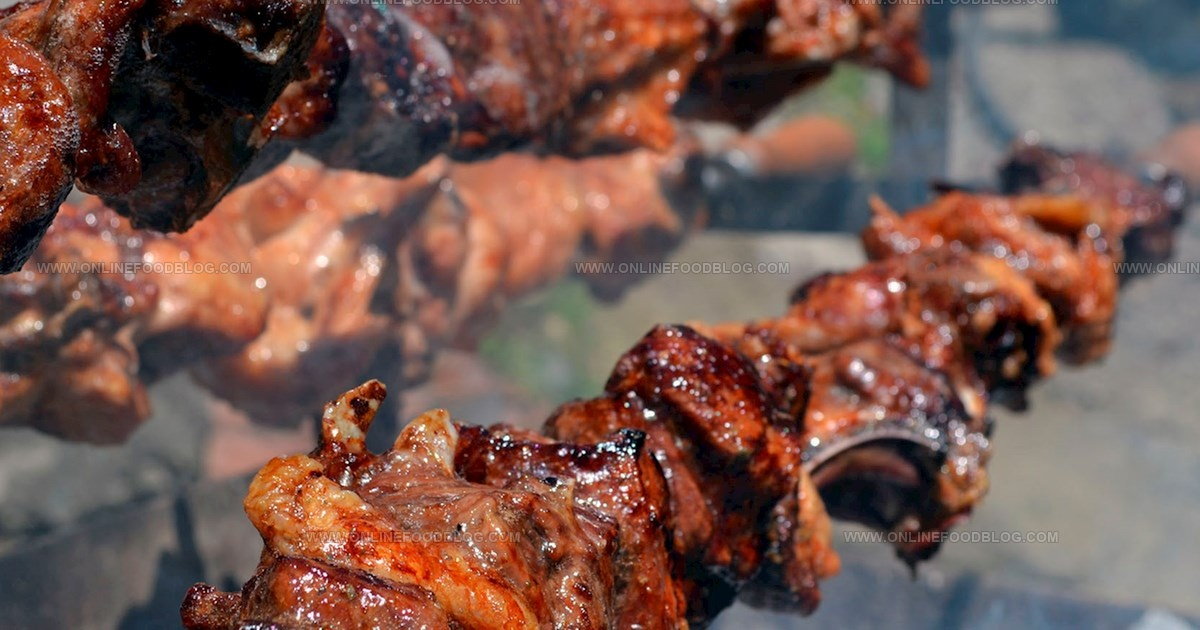
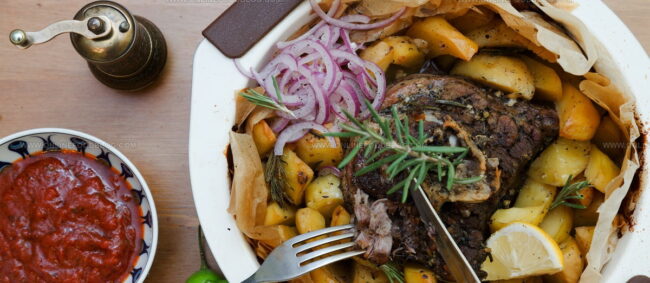
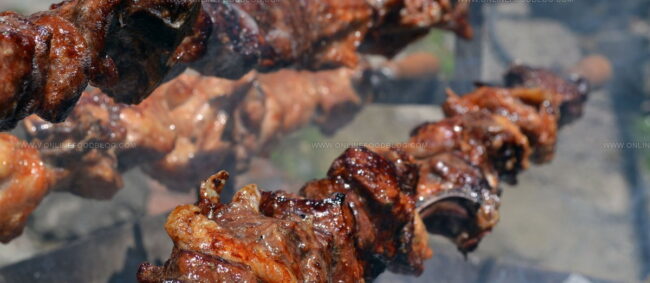
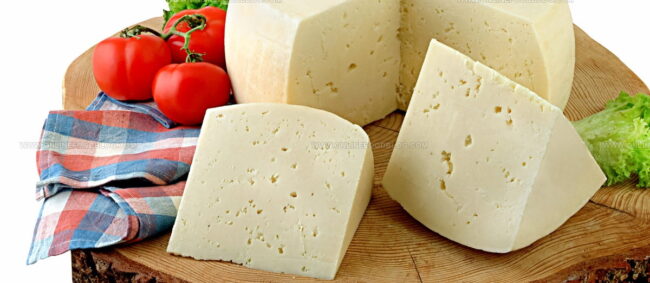
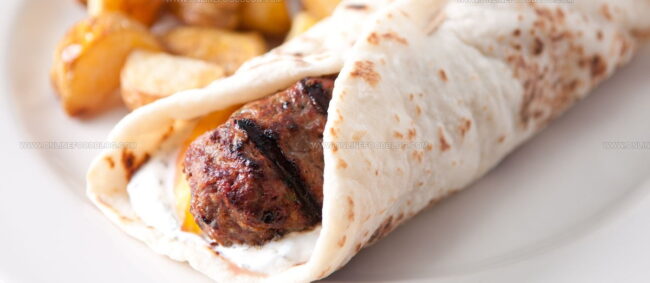
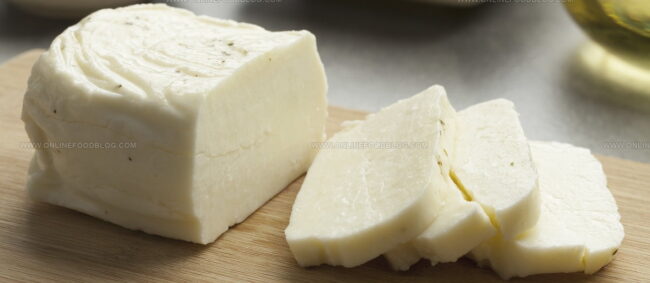
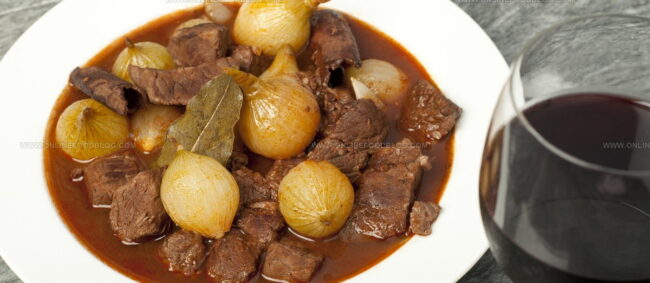

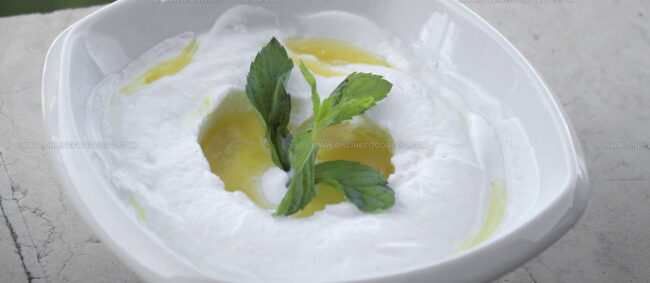

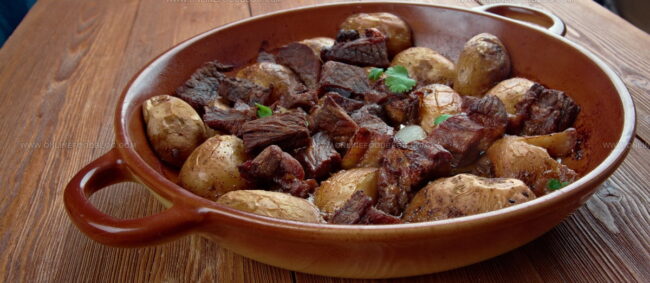

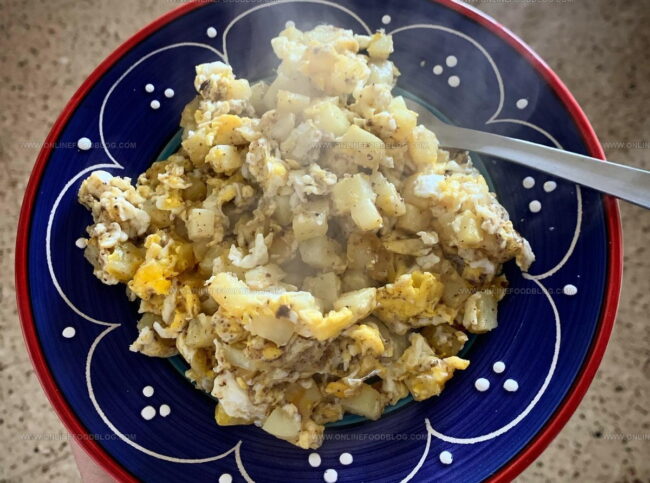
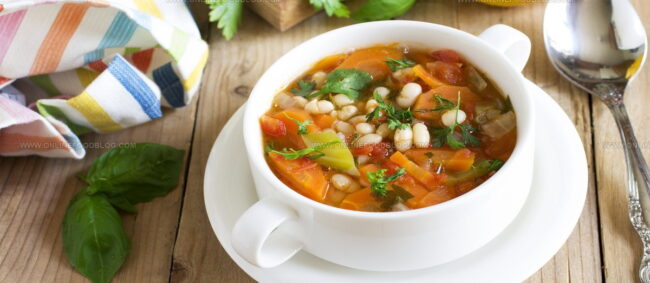

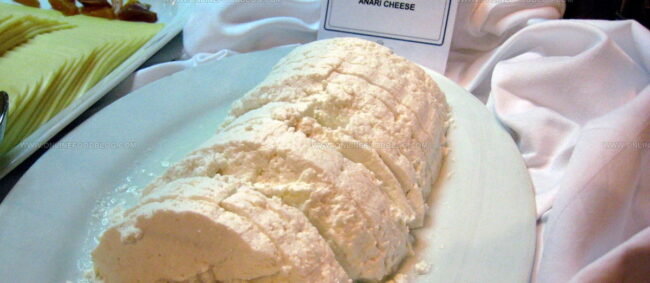

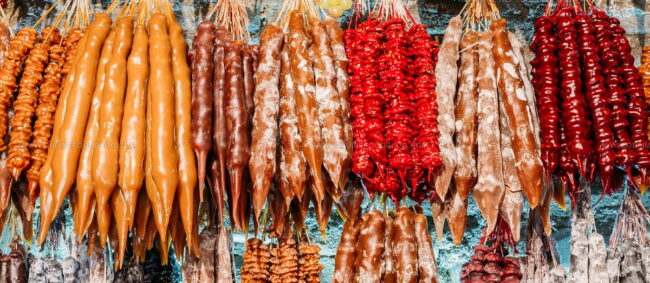

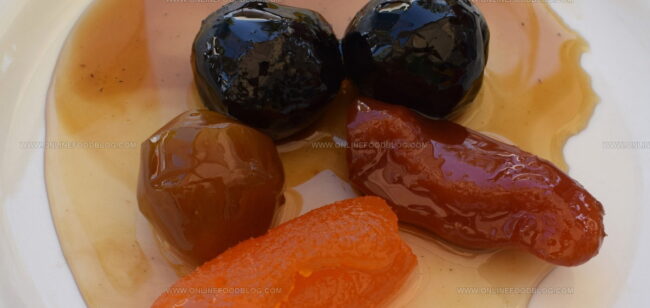
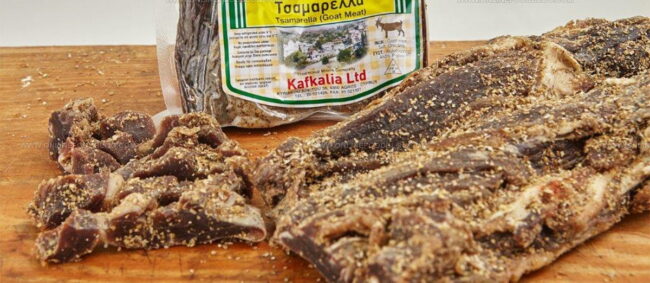
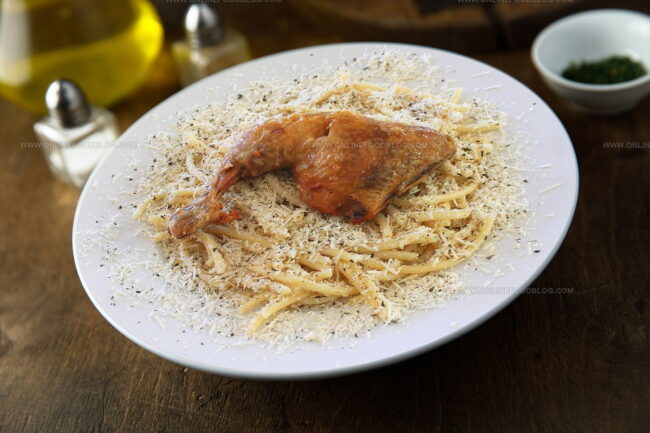



Lucas Bennett
Founder & Recipe Creator
Expertise
Simple Everyday Recipes, Sustainable Cooking Practices, Creative Meal Planning, Recipe Testing and Improvement
Education
Fox Valley Technical College, Appleton, Wisconsin
Lake Superior College, Duluth, Minnesota
Lucas Bennett’s cooking journey started in his parents’ kitchen, where he learned to prepare tasty, no-fuss meals from scratch. His culinary passion led him to Fox Valley Technical College, where he gained practical cooking skills.
He then expanded his focus on sustainability at Lake Superior College. Today, Lucas shares easy, approachable recipes designed to make cooking enjoyable and stress-free for everyone.